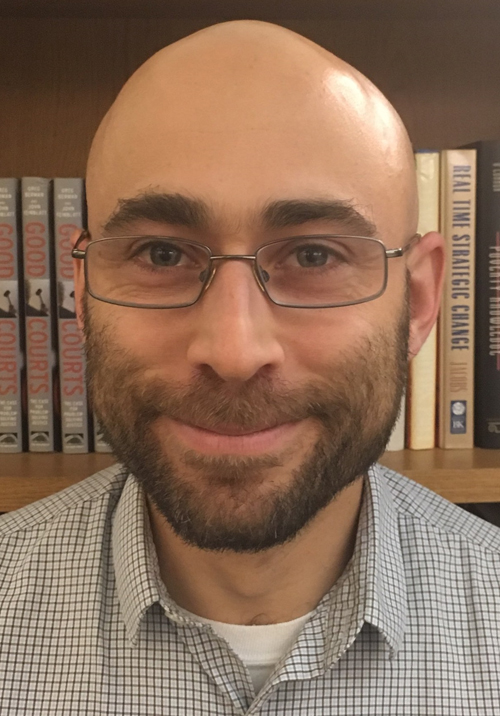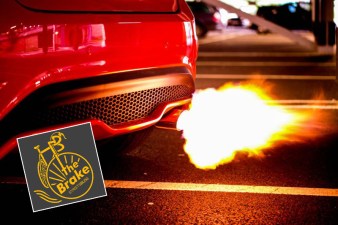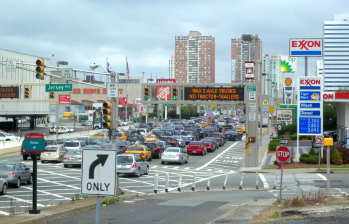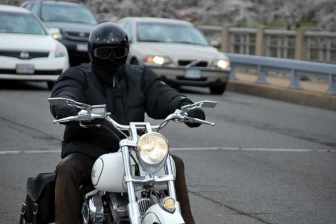OPINION: Loud Driving Threatens Our Health
Deliberate, fossil-fueled noise demands a multifaceted, whole-of-government response.

Muscle cars, dirt bikes, and all-terrain vehicles roar down neighborhood streets mimicking aircraft, weapons, and explosives. After the eerie quiet last spring, loud drivers with little else to do have turned up the volume to what for many listeners is a shocking degree.

Despite concerns that some drivers just can’t afford basic car repairs, loud driving is not a bug. It’s a feature. For loud drivers, the noise is much of the fun. In their own defense, they say city neighborhoods are already noisy, as if vehicle engines weren’t the prime culprit.
After neighborhood outcry all across New York, public officials vow action. Bay Ridge State Sen. Andrew Gounardes crafted the SLEEP Act to better equip police officers to measure sound levels and impose penalties that deter loud driving. Another bill would automate enforcement with noise cameras, which ticket loud drivers in London and Paris.
These efforts are just getting underway. With the Times reporting that some New Yorkers are investing their stimulus money in their loud hobby, the problem is unlikely to resolve itself. Future legislation, for example, could impound loud vehicles, sticking drivers with the bill for towing, storage, and modification to make them quiet as possible.
Loud driving isn’t just a quality-of-life issue, like loud bars or graffiti, that, depending on your opinion, does or doesn’t warrant policing. Deliberate, fossil-fueled noise is a growing public-health threat demanding a multifaceted, whole-of-government solution.
Loud driving isn’t just noisy. It’s unhealthy. Nighttime noise disrupts sleep, which makes it harder to learn at school and be productive at work. Daytime noise drowns out teachers’ lessons, studying, and homework. Loud driving is a terrible excuse to undermine kids’ education.
Today, folks across New York can breathe a sigh of relief knowing that they won’t be kept up at night by excessively loud mufflers & exhaust systems. With the passage of the SLEEP Act, we can now curtail the dangerous & obnoxious noise pollution that has plagued our community. https://t.co/QXmOmXD9Sx
— Senator Andrew Gounardes (@Sen_Gounardes) June 10, 2021
Worse, high blood pressure, heart attack and Type II diabetes leading to premature death are all tied to traffic-noise exposure. Lower-income neighborhoods suffer more traffic noise, so the negative health effects of loud driving are also inequitable.
Those are just the noise impacts. Loud driving burns fuel to produce air pollution and carbon emissions along with the revs and roars. Depending on the vehicle and the modifications involved, the air pollution can be much worse than what comes from a typical tailpipe.
Worse, some loud drivers deliberately create clouds of exhaust to add to the sensory overload of their behavior. Noxious pollution only exacerbates the severe, unfair health effects of the noise.
That’s just locally. Loud driving makes a sport of consuming fossil fuels. The resulting carbon emissions are cooking the planet — for fun, to grab attention, and demonstrate force.
The public-health effects of extreme heat, severe storms, and sea-level rise are many. Like everything else, they’re unevenly distributed. In New York and around the world, climate-change effects are worse for people with fewer resources and more underlying problems.
Loud driving is destructive recreation that glorifies fossil-fuel consumption. It’s especially galling in a city with an extensive public-transit system, where most driving is already unnecessary and motivated by status or convenience.
New York City’s carbon emissions from passenger cars haven’t budged in decades. Promoting car culture by letting loud drivers do what they want normalizes driving for another generation of impressionable New Yorkers. It mocks our climate goals.
Just as with traffic deaths and serious injuries, if policing alone were the solution to loud driving, it would be solved. That’s why the supposed choice between police reform and addressing the public-health consequences of car noise is a false one.
As with Vision Zero, better engineering of our public spaces is the most important part of confronting loud driving. The opportunity to speed is an opportunity to make noise. Engineering solutions to speeding — road diets, narrowed lanes, automated enforcement, and more — will also quiet traffic.
Taking public space back from private vehicles is essential. Transportation Alternatives’ NYC 25×25 agenda, which aims to reallocate a quarter of our street space in the next five years, is integral to stopping loud driving. New plazas, green spaces, eating spaces, and play spaces deny loud drivers the opportunity to hit the gas.
Law enforcement should focus on the loud-driving profiteers, from carmakers to gas stations. City inspectors should fine or shut down businesses that sell illegal vehicles or make illegal modifications. City lawyers should sue suppliers and distributors of loud vehicles and parts for the nuisance they’ve brought to our streets.
As with any campaign to promote public health, officials should use their bully pulpits to get the message out. Loud drivers should hear and see constant nudges to stop what they’re doing. Leaders should communicate what behavior is unacceptable and why.
Billboards, digital advertising and signage at major intersections and highway exits should greet drivers: “Welcome to the neighborhood. Now STFU.” More gently, “Babies sleep here. Children are trying to learn. Kids are at play.”
Danny Pearlstein is the policy and communications director of Riders Alliance. Follow him on Twitter @dannypearlstein.



